Randy Goebel
Getting SMARTER for Motion Planning in Autonomous Driving Systems
Feb 20, 2025



Abstract:Motion planning is a fundamental problem in autonomous driving and perhaps the most challenging to comprehensively evaluate because of the associated risks and expenses of real-world deployment. Therefore, simulations play an important role in efficient development of planning algorithms. To be effective, simulations must be accurate and realistic, both in terms of dynamics and behavior modeling, and also highly customizable in order to accommodate a broad spectrum of research frameworks. In this paper, we introduce SMARTS 2.0, the second generation of our motion planning simulator which, in addition to being highly optimized for large-scale simulation, provides many new features, such as realistic map integration, vehicle-to-vehicle (V2V) communication, traffic and pedestrian simulation, and a broad variety of sensor models. Moreover, we present a novel benchmark suite for evaluating planning algorithms in various highly challenging scenarios, including interactive driving, such as turning at intersections, and adaptive driving, in which the task is to closely follow a lead vehicle without any explicit knowledge of its intention. Each scenario is characterized by a variety of traffic patterns and road structures. We further propose a series of common and task-specific metrics to effectively evaluate the performance of the planning algorithms. At the end, we evaluate common motion planning algorithms using the proposed benchmark and highlight the challenges the proposed scenarios impose. The new SMARTS 2.0 features and the benchmark are publicly available at github.com/huawei-noah/SMARTS.
Metadata-based Data Exploration with Retrieval-Augmented Generation for Large Language Models
Oct 05, 2024



Abstract:Developing the capacity to effectively search for requisite datasets is an urgent requirement to assist data users in identifying relevant datasets considering the very limited available metadata. For this challenge, the utilization of third-party data is emerging as a valuable source for improvement. Our research introduces a new architecture for data exploration which employs a form of Retrieval-Augmented Generation (RAG) to enhance metadata-based data discovery. The system integrates large language models (LLMs) with external vector databases to identify semantic relationships among diverse types of datasets. The proposed framework offers a new method for evaluating semantic similarity among heterogeneous data sources and for improving data exploration. Our study includes experimental results on four critical tasks: 1) recommending similar datasets, 2) suggesting combinable datasets, 3) estimating tags, and 4) predicting variables. Our results demonstrate that RAG can enhance the selection of relevant datasets, particularly from different categories, when compared to conventional metadata approaches. However, performance varied across tasks and models, which confirms the significance of selecting appropriate techniques based on specific use cases. The findings suggest that this approach holds promise for addressing challenges in data exploration and discovery, although further refinement is necessary for estimation tasks.
Incorporating Explanations into Human-Machine Interfaces for Trust and Situation Awareness in Autonomous Vehicles
Apr 10, 2024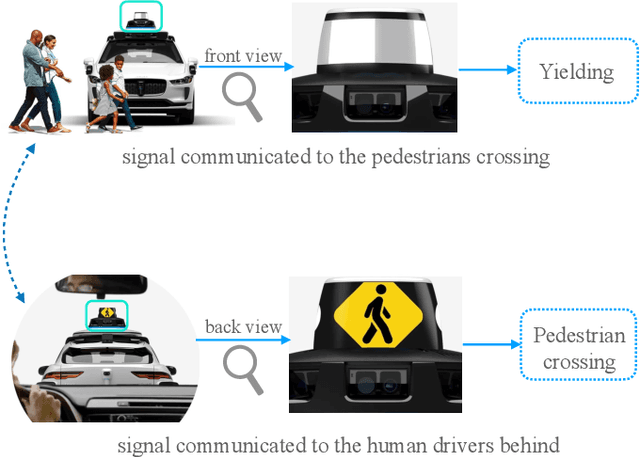

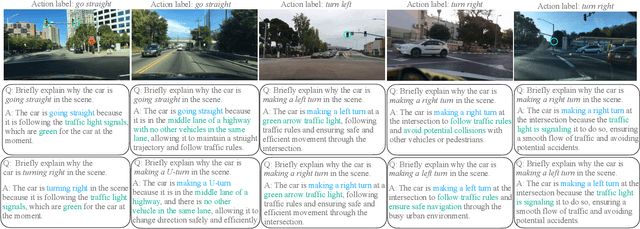
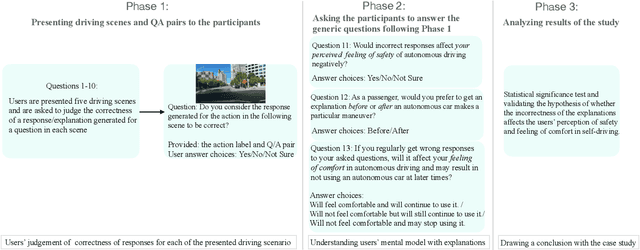
Abstract:Autonomous vehicles often make complex decisions via machine learning-based predictive models applied to collected sensor data. While this combination of methods provides a foundation for real-time actions, self-driving behavior primarily remains opaque to end users. In this sense, explainability of real-time decisions is a crucial and natural requirement for building trust in autonomous vehicles. Moreover, as autonomous vehicles still cause serious traffic accidents for various reasons, timely conveyance of upcoming hazards to road users can help improve scene understanding and prevent potential risks. Hence, there is also a need to supply autonomous vehicles with user-friendly interfaces for effective human-machine teaming. Motivated by this problem, we study the role of explainable AI and human-machine interface jointly in building trust in vehicle autonomy. We first present a broad context of the explanatory human-machine systems with the "3W1H" (what, whom, when, how) approach. Based on these findings, we present a situation awareness framework for calibrating users' trust in self-driving behavior. Finally, we perform an experiment on our framework, conduct a user study on it, and validate the empirical findings with hypothesis testing.
Safety Implications of Explainable Artificial Intelligence in End-to-End Autonomous Driving
Mar 18, 2024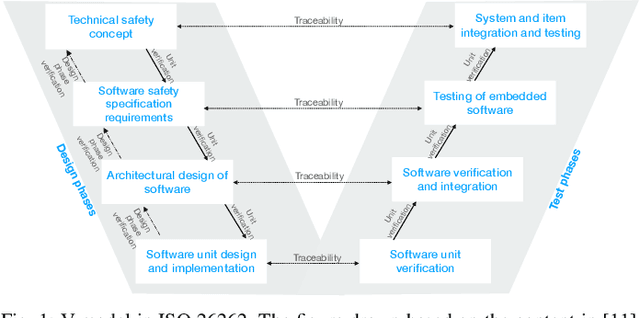
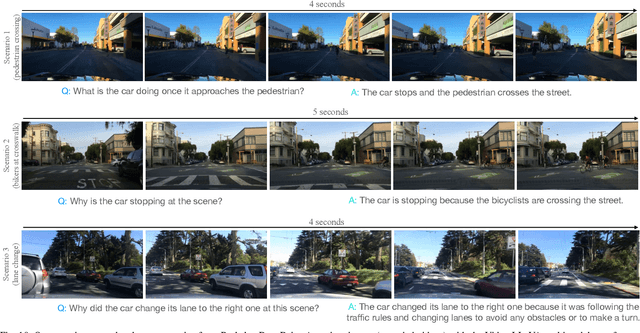
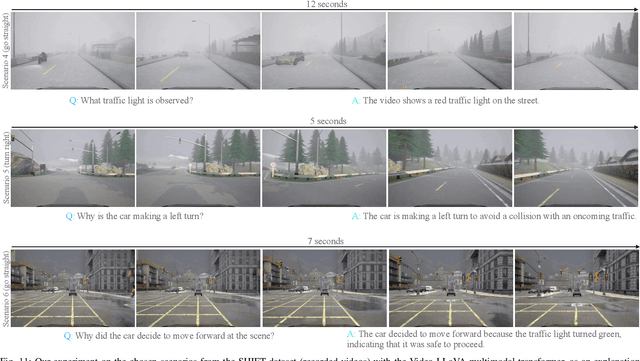
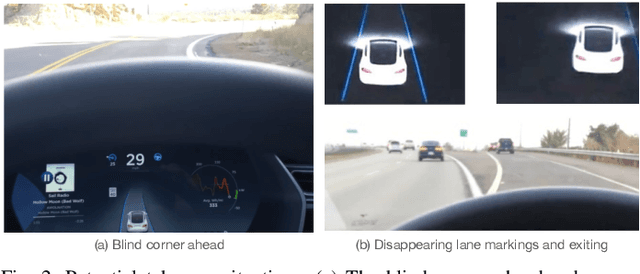
Abstract:The end-to-end learning pipeline is gradually creating a paradigm shift in the ongoing development of highly autonomous vehicles, largely due to advances in deep learning, the availability of large-scale training datasets, and improvements in integrated sensor devices. However, a lack of interpretability in real-time decisions with contemporary learning methods impedes user trust and attenuates the widespread deployment and commercialization of such vehicles. Moreover, the issue is exacerbated when these cars are involved in or cause traffic accidents. Such drawback raises serious safety concerns from societal and legal perspectives. Consequently, explainability in end-to-end autonomous driving is essential to enable the safety of vehicular automation. However, the safety and explainability aspects of autonomous driving have generally been investigated disjointly by researchers in today's state of the art. In this paper, we aim to bridge the gaps between these topics and seek to answer the following research question: When and how can explanations improve safety of autonomous driving? In this regard, we first revisit established safety and state-of-the-art explainability techniques in autonomous driving. Furthermore, we present three critical case studies and show the pivotal role of explanations in enhancing self-driving safety. Finally, we describe our empirical investigation and reveal potential value, limitations, and caveats with practical explainable AI methods on their role of assuring safety and transparency for vehicle autonomy.
Black-Box Analysis: GPTs Across Time in Legal Textual Entailment Task
Sep 11, 2023



Abstract:The evolution of Generative Pre-trained Transformer (GPT) models has led to significant advancements in various natural language processing applications, particularly in legal textual entailment. We present an analysis of GPT-3.5 (ChatGPT) and GPT-4 performances on COLIEE Task 4 dataset, a prominent benchmark in this domain. The study encompasses data from Heisei 18 (2006) to Reiwa 3 (2021), exploring the models' abilities to discern entailment relationships within Japanese statute law across different periods. Our preliminary experimental results unveil intriguing insights into the models' strengths and weaknesses in handling legal textual entailment tasks, as well as the patterns observed in model performance. In the context of proprietary models with undisclosed architectures and weights, black-box analysis becomes crucial for evaluating their capabilities. We discuss the influence of training data distribution and the implications on the models' generalizability. This analysis serves as a foundation for future research, aiming to optimize GPT-based models and enable their successful adoption in legal information extraction and entailment applications.
Explaining Autonomous Driving Actions with Visual Question Answering
Jul 19, 2023Abstract:The end-to-end learning ability of self-driving vehicles has achieved significant milestones over the last decade owing to rapid advances in deep learning and computer vision algorithms. However, as autonomous driving technology is a safety-critical application of artificial intelligence (AI), road accidents and established regulatory principles necessitate the need for the explainability of intelligent action choices for self-driving vehicles. To facilitate interpretability of decision-making in autonomous driving, we present a Visual Question Answering (VQA) framework, which explains driving actions with question-answering-based causal reasoning. To do so, we first collect driving videos in a simulation environment using reinforcement learning (RL) and extract consecutive frames from this log data uniformly for five selected action categories. Further, we manually annotate the extracted frames using question-answer pairs as justifications for the actions chosen in each scenario. Finally, we evaluate the correctness of the VQA-predicted answers for actions on unseen driving scenes. The empirical results suggest that the VQA mechanism can provide support to interpret real-time decisions of autonomous vehicles and help enhance overall driving safety.
A negation detection assessment of GPTs: analysis with the xNot360 dataset
Jun 29, 2023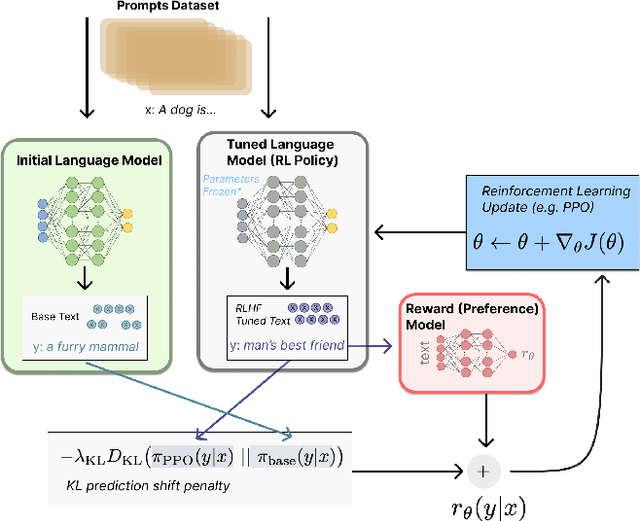



Abstract:Negation is a fundamental aspect of natural language, playing a critical role in communication and comprehension. Our study assesses the negation detection performance of Generative Pre-trained Transformer (GPT) models, specifically GPT-2, GPT-3, GPT-3.5, and GPT-4. We focus on the identification of negation in natural language using a zero-shot prediction approach applied to our custom xNot360 dataset. Our approach examines sentence pairs labeled to indicate whether the second sentence negates the first. Our findings expose a considerable performance disparity among the GPT models, with GPT-4 surpassing its counterparts and GPT-3.5 displaying a marked performance reduction. The overall proficiency of the GPT models in negation detection remains relatively modest, indicating that this task pushes the boundaries of their natural language understanding capabilities. We not only highlight the constraints of GPT models in handling negation but also emphasize the importance of logical reliability in high-stakes domains such as healthcare, science, and law.
NeurIPS 2022 Competition: Driving SMARTS
Nov 14, 2022

Abstract:Driving SMARTS is a regular competition designed to tackle problems caused by the distribution shift in dynamic interaction contexts that are prevalent in real-world autonomous driving (AD). The proposed competition supports methodologically diverse solutions, such as reinforcement learning (RL) and offline learning methods, trained on a combination of naturalistic AD data and open-source simulation platform SMARTS. The two-track structure allows focusing on different aspects of the distribution shift. Track 1 is open to any method and will give ML researchers with different backgrounds an opportunity to solve a real-world autonomous driving challenge. Track 2 is designed for strictly offline learning methods. Therefore, direct comparisons can be made between different methods with the aim to identify new promising research directions. The proposed setup consists of 1) realistic traffic generated using real-world data and micro simulators to ensure fidelity of the scenarios, 2) framework accommodating diverse methods for solving the problem, and 3) baseline method. As such it provides a unique opportunity for the principled investigation into various aspects of autonomous vehicle deployment.
Deep Temporal Modelling of Clinical Depression through Social Media Text
Oct 28, 2022



Abstract:We describe the development of a model to detect user-level clinical depression based on a user's temporal social media posts. Our model uses a Depression Symptoms Detection (DSD) model, which is trained on the largest existing samples of clinician annotated tweets for clinical depression symptoms. We subsequently use our DSD model to extract clinically relevant features, e.g., depression scores and their consequent temporal patterns, as well as user posting activity patterns, e.g., quantifying their ``no activity'' or ``silence.'' Furthermore, to evaluate the efficacy of these extracted features, we create three kinds of datasets including a test dataset, from two existing well-known benchmark datasets for user-level depression detection. We then provide accuracy measures based on single features, baseline features and feature ablation tests, at several different levels of temporal granularity, data distributions, and clinical depression detection related settings to draw a complete picture of the impact of these features across our created datasets. Finally, we show that, in general, only semantic oriented representation models perform well. However, clinical features may enhance overall performance provided that the training and testing distribution is similar, and there is more data in a user's timeline. Further, we show that the predictive capability of depression scores increase significantly while used in a more sensitive clinical depression detection settings.
Depression Symptoms Modelling from Social Media Text: An Active Learning Approach
Sep 08, 2022



Abstract:A fundamental component of user-level social media language based clinical depression modelling is depression symptoms detection (DSD). Unfortunately, there does not exist any DSD dataset that reflects both the clinical insights and the distribution of depression symptoms from the samples of self-disclosed depressed population. In our work, we describe an Active Learning (AL) framework which uses an initial supervised learning model that leverages 1) a state-of-the-art large mental health forum text pre-trained language model further fine-tuned on a clinician annotated DSD dataset, 2) a Zero-Shot learning model for DSD, and couples them together to harvest depression symptoms related samples from our large self-curated Depression Tweets Repository (DTR). Our clinician annotated dataset is the largest of its kind. Furthermore, DTR is created from the samples of tweets in self-disclosed depressed users Twitter timeline from two datasets, including one of the largest benchmark datasets for user-level depression detection from Twitter. This further helps preserve the depression symptoms distribution of self-disclosed Twitter users tweets. Subsequently, we iteratively retrain our initial DSD model with the harvested data. We discuss the stopping criteria and limitations of this AL process, and elaborate the underlying constructs which play a vital role in the overall AL process. We show that we can produce a final dataset which is the largest of its kind. Furthermore, a DSD and a Depression Post Detection (DPD) model trained on it achieves significantly better accuracy than their initial version.
 Add to Chrome
Add to Chrome Add to Firefox
Add to Firefox Add to Edge
Add to Edge